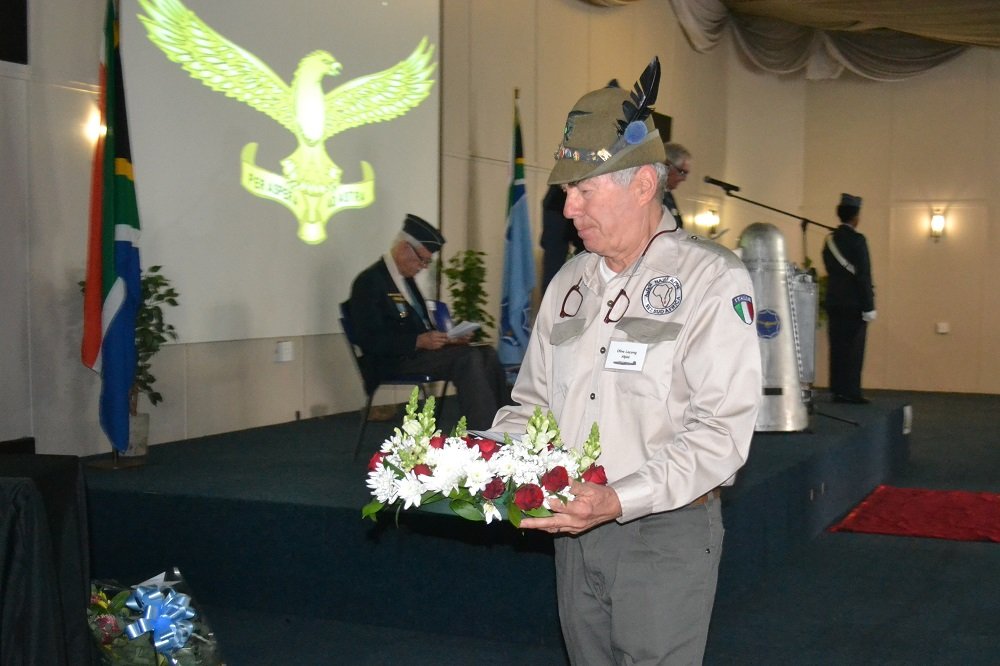Heaviest SAAF losses in WWII remembered – SABC News

The sacrifices and bravery of members of 31 and 34 squadrons of the South African Air Force (SAAF) who died in the Italian Alps in 1944 while dropping supplies to the Italian partisans in the Po Valley 81 years ago, have been remembered at a service in Pretoria.
The annual memorial service, which is usually held at the SAAF Memorial on Bays Hill in Swartkop, was moved at short notice to Hangar 5 at Air Force Mobile Deployment Wing Air (previously known as Air Force Base Swartkop), because of rainy conditions expected in the area over the weekend.
Martin Urry, Chairman of the Alpine 44 Club, spoke about his family’s connection to an event that has been chronicled as the largest loss of life in a single day in the SAAF’s more than 100-year history.
He said: “Growing up I had always known that my father’s twin brother, Selwyn, had been a pilot in the war and that he had died. But I knew very little about what had happened. My father never spoke about it. The aim of the Alpine 44 Club is to ensure that these men are not forgotten. Plaques have been laid at the five known crash sites near the villages of Ostana, Valprato Soana, Ala di Stura, Rorà, and Cantalupa. The crash site of flight KH 158 is unknown to this day. Services are regularly held in these villages to pay tribute to the men”.
Urry’s relative, Major S.S Urry, was the pilot of 31 Squadron’s aircraft KH158. This plane is believed to have crashed into the sea off Genoa. It was one of 20 B-24 Liberator heavy bombers which were to drop supplies to Italian partisans in north-west Italy in support of the Allied assault on the heavily fortified German defensive system known as the Gothic Line.
The aircraft flew night missions, flying at low altitude over heavily defended territory to reach pre-arranged drop zones.
On the night of 12 October, they encountered unexpectedly bad weather with very heavy cloud and rain. Only three aircraft successfully located their drop zones and delivered their payloads – 11 aborted their mission, and six were lost. 48 airmen – from the SAAF, Royal Air Force and Royal Australian Air Force – lost their lives.
Commenting on the composition of the crews, Urry explained the reason, saying: “These two squadrons together with other squadrons of the Royal Air Force had flown to Warsaw a few months before and had suffered heavy losses, so the officials took crews from wherever they could for these missions.”
In August and September 1944, 23 SAAF aircraft were lost and 44 members of the SAAF died during the flights to assist the Polish resistance.
While World War ll is long over, Reverend Trevor Slade noted sadly that the world is still dealing with the effects of war, slaughter and destruction today. He pointed to the situation between Ukraine and Russia, and between Israel and Hamas.
He expressed the hope that peace must take root in the Middle East now, in Asia and Ukraine, and the killings in Nigeria must stop. He raised the bright prospect of the imminent return of the Israeli hostages.
Wreaths were laid inside the hanger on behalf of the Chief of the SAAF, the Royal Air Force Officers’ Club and the crew members of each of the six aircraft lost on the night of the 12th and 13th of October 1944. South African Italians representing the Zonderwater Block ex-POW Association, the Associazione Nazionale Alpini Sezione Sud Africa and the Associazione Carabinieri SA also laid wreaths.
